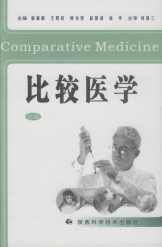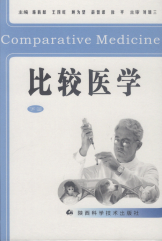
并列正书名: Comparative Medicine
主要责任者: 施新猷,王四旺,顾为望,薛智谋,徐平
责任方式: 主编
出版者: 陕西科学技术出版社
出版地: 西安
字数: 2380 千字
页码: 1-793
开本: 16
装帧: 精
分辑名:上册
语种:中
定价:260.00(上、下册)
出版时间:2003-07
丛书多卷书否:是
书目简介:本册工具书共收录316条词条。
被引频次:33

并列正书名: Comparative Medicine
主要责任者: 施新猷,王四旺,顾为望,薛智谋,徐平
责任方式: 主编
出版者: 陕西科学技术出版社
出版地: 西安
字数: 2380 千字
页码: 794-1476
开本: 16
装帧: 精
分辑名:下册
语种:中
定价:260.00(上、下册)
出版时间:2003-07
丛书多卷书否:是
书目简介:本册工具书共收录427条词条。
被引频次:123